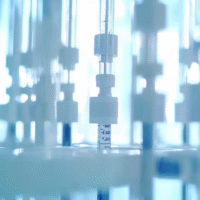Understanding the Psychoeducation Group for Depression (PEG-D) Study
What is the Study About?
This study looks at a new program designed to help people with depression. It combines regular treatment with a short educational program that teaches patients about depression and how to cope with it.
Who Was Involved?
The study included 190 patients diagnosed with Major Depressive Disorder (MDD). They were divided into two groups:
- Group 1: Received standard treatment plus the psychoeducational program.
- Group 2: Received only standard treatment.
What Did the Program Include?
The psychoeducational program consisted of six weekly group sessions. Each session lasted 90 minutes and had 6-10 participants. The sessions covered:
- Information about depression
- Techniques to identify and cope with depression
What Were the Results?
The main goals of the study were to:
- Reduce depression levels
- Increase knowledge about depression
Secondary goals included improving daily functioning and quality of life. These were measured using various scales.
What Worked and What Didn’t?
If the program shows better results than standard treatment alone, it could be a helpful addition to existing treatments. If it doesn’t show significant improvement, it may not be necessary to use this program.
How Does This Help Patients and Clinics?
This study could lead to:
- A new, cost-effective way to help patients with depression.
- Better understanding of how education can support mental health.
Real-World Opportunities for Hospitals and Doctors
Based on the findings, clinics can:
- Implement the psychoeducational program alongside standard treatments.
- Consider offering the program in different formats, like online sessions.
Measurable Outcomes to Track
Clinics should monitor:
- Changes in depression levels using the Beck Depression Inventory (BDI-II).
- Improvements in daily functioning and quality of life.
AI Tools That Can Help
Clinics might consider using AI tools for:
- Tracking patient progress and outcomes.
- Providing personalized educational resources for patients.
Step-by-Step Plan for Clinics
To start applying these findings:
- Begin with a small group of patients to test the psychoeducational program.
- Gather feedback and measure outcomes regularly.
- Expand the program based on initial results and patient needs.
Learn More About the Research
For more details, you can read the full study here.




























